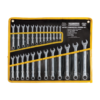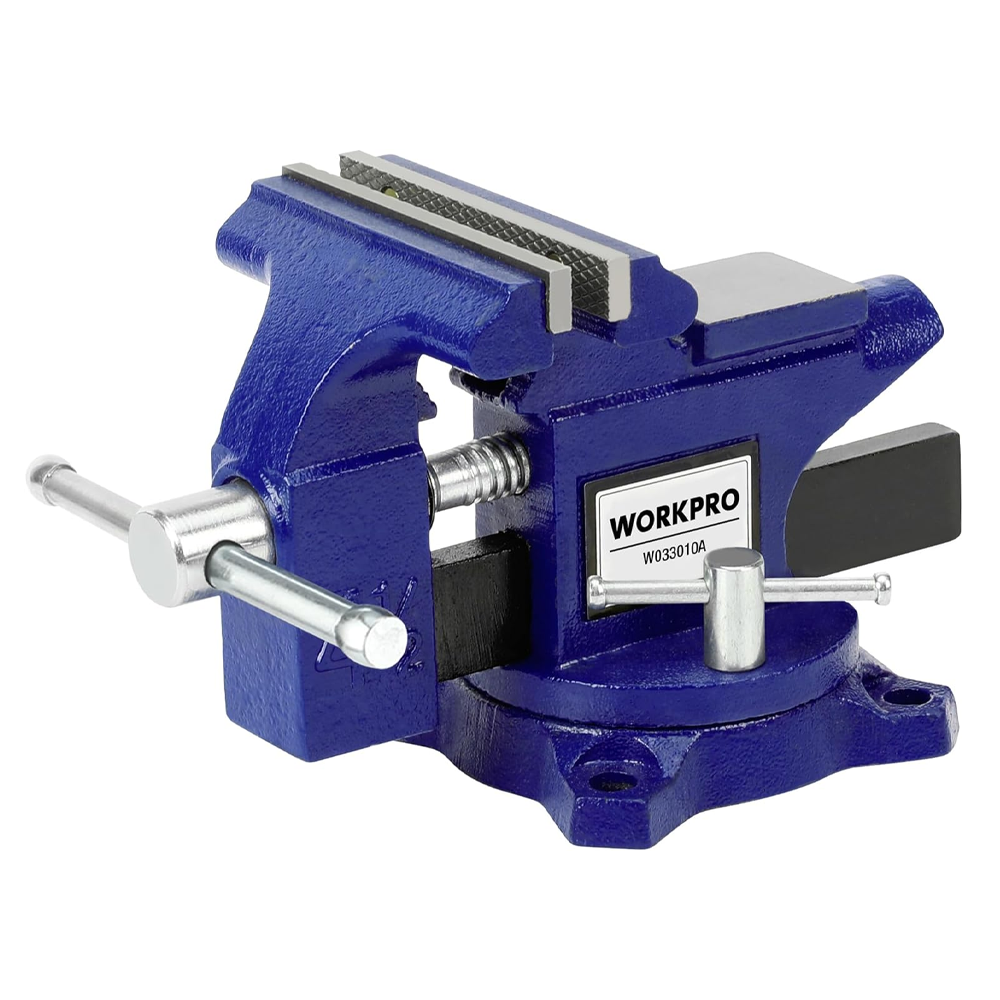🚚 Fast Delivery | ⭐ Best Quality | 📞 24/7 Support
+971 2 552 3918
info@coolwaybm.com
- Power Tools & Machinery
- Fire and Safety Equipement
Fire and Safety Equipement
- Adhesives
- Plumbing & Sanitary
- Packing Materials
Packing Materials
- Abrasives
- Carpentry
- Welding Accessories
Welding Accessories
- Fasteners
- Lock & Furniture Accessories
Lock & Furniture Accessories
- A/C Refrigeration
- Electrical
Electrical
د.إ1.00


د.إ1.00
You can add any HTML here
We suggest you to create a Saved Template in Dashboard -> Templates -> Saved Templates and use it by switching content type above to Saved template.
A bench vice is a mechanical tool designed to securely hold objects in place while they are being worked on, making it an essential piece of equipment in workshops, garages, and industrial settings. Mounted on a workbench, a bench vice provides a stable, immovable platform that allows users to perform tasks like cutting, drilling, filing, sanding, and assembly work with greater ease, precision, and safety.
The main structure of a bench vice includes two jaws—one fixed and one movable—that clamp down on the workpiece. The user controls the clamping force by turning a handle, usually attached to a lead screw, which moves the movable jaw closer or further away from the fixed jaw. This mechanism allows for secure gripping of materials of different shapes and sizes.
Bench vices come in several types to accommodate various tasks:
- Woodworking Vices: These vices are specifically designed to hold wood without damaging it. They often have smooth jaws or removable soft jaw covers to protect delicate wooden surfaces.
- Metalworking Vices: Built for durability, these vices have a robust construction and serrated jaws that grip metal parts firmly. They’re often used in metal fabrication, welding, and automotive work.
- Multipurpose Vices: These vices offer versatility for general use and often come with replaceable jaw covers and swivel bases, allowing users to rotate the vice and work at different angles.
One of the significant advantages of a bench vice is the stability it provides. By securely holding the workpiece in place, it frees up both hands for precision work, allowing users to handle tools more effectively and avoid accidental slips or damage. This stability also contributes to safety, as the vice minimizes the risk of workpieces moving or shifting unexpectedly during cutting or drilling tasks. Additionally, the strong clamping force of a bench vice enables users to work with heavier or more robust materials that require additional support.
In summary, a bench vice is a fundamental tool for anyone involved in woodworking, metalworking, or general repair tasks. Its ability to hold materials securely not only enhances precision and safety but also speeds up workflows by allowing for steady, uninterrupted work.
There is £4.99 charge for delivery under £50 Orders. Additional charges will be imposed by our couriers for delivery to remote area, a surcharge may be levied to cover carriage to these areas.
Bench Vice
د.إ1.00
- Used to hold objects securely in place for tasks like cutting, drilling, filing, or sanding.
- Common in workshops, garages, metalworking, woodworking, and DIY projects.
- Consists of two jaws, a handle, and a base that attaches to a workbench.
- : Includes woodworking vices, metalworking vices, and multipurpose vices.
- Provides stability, improves precision, and enhances safety when working with tools.
A bench vice is a mechanical tool designed to securely hold objects in place while they are being worked on, making it an essential piece of equipment in workshops, garages, and industrial settings. Mounted on a workbench, a bench vice provides a stable, immovable platform that allows users to perform tasks like cutting, drilling, filing, sanding, and assembly work with greater ease, precision, and safety.
The main structure of a bench vice includes two jaws—one fixed and one movable—that clamp down on the workpiece. The user controls the clamping force by turning a handle, usually attached to a lead screw, which moves the movable jaw closer or further away from the fixed jaw. This mechanism allows for secure gripping of materials of different shapes and sizes.
Bench vices come in several types to accommodate various tasks:
- Woodworking Vices: These vices are specifically designed to hold wood without damaging it. They often have smooth jaws or removable soft jaw covers to protect delicate wooden surfaces.
- Metalworking Vices: Built for durability, these vices have a robust construction and serrated jaws that grip metal parts firmly. They’re often used in metal fabrication, welding, and automotive work.
- Multipurpose Vices: These vices offer versatility for general use and often come with replaceable jaw covers and swivel bases, allowing users to rotate the vice and work at different angles.
One of the significant advantages of a bench vice is the stability it provides. By securely holding the workpiece in place, it frees up both hands for precision work, allowing users to handle tools more effectively and avoid accidental slips or damage. This stability also contributes to safety, as the vice minimizes the risk of workpieces moving or shifting unexpectedly during cutting or drilling tasks. Additionally, the strong clamping force of a bench vice enables users to work with heavier or more robust materials that require additional support.
In summary, a bench vice is a fundamental tool for anyone involved in woodworking, metalworking, or general repair tasks. Its ability to hold materials securely not only enhances precision and safety but also speeds up workflows by allowing for steady, uninterrupted work.
There is £4.99 charge for delivery under £50 Orders. Additional charges will be imposed by our couriers for delivery to remote area, a surcharge may be levied to cover carriage to these areas.
Reviews
There are no reviews yet.
Buy more save more!
Buy from 2 to 4 items and get 10% OFF
on each productBuy from 5 to 8 items and get 15% OFF
on each product- Free shipping on all orders above 50,00
- No hassle returns, 30 days return
- Next day delivery within your country










Reviews
There are no reviews yet.